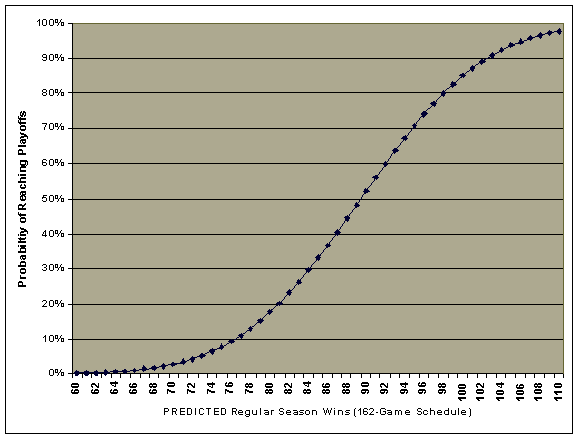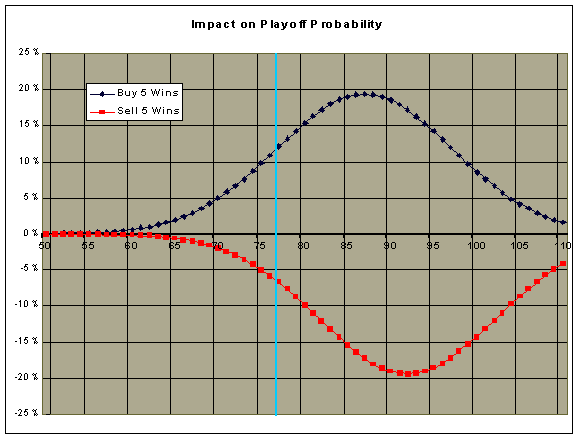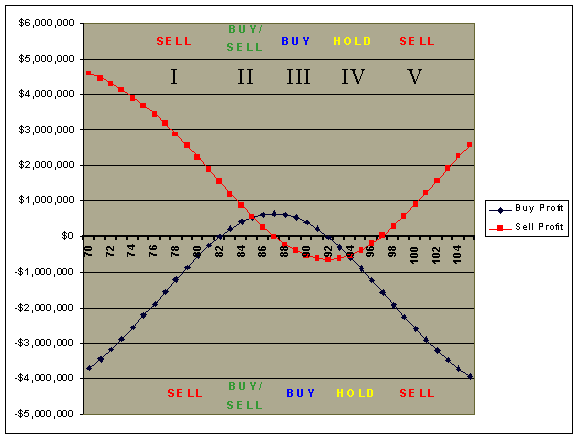BP Comment Quick Links

 | |
March 30, 2012 The BP Wayback MachineDefending JeffreyWhile looking toward the future with our comprehensive slate of current content, we'd also like to recognize our rich past by drawing upon our extensive (and mostly free) online archive of work dating back to 1997. In an effort to highlight the best of what's gone before, we'll be bringing you a weekly blast from BP's past, introducing or re-introducing you to some of the most informative and entertaining authors who have passed through our virtual halls. If you have fond recollections of a BP piece that you'd like to nominate for re-exposure to a wider audience, send us your suggestion. Nate tackled the question of when it makes sense to be a seller in the article reproduced below, which originally ran as a "Lies, Damned Lies" column on November 22, 2005.
In the face of all that, I'm here to make the case for the Great Florida Fire Sale.
You only have one chance to get trading a young player like Beckett right. The Marlins have come about a Reggie Bush 40-yard scamper from doing that. But if the execution is lacking, the decision to build down rather than up is the economically correct one. Each team can enter the hot-stove season with one of three potential strategies: buy additional talent, sell off talent, or hold about the same level of talent as before. A fourth strategy, I suppose, is to lay low, evaluate market dynamics, and try and arbitrage whichever side of the coin looks more favorable, but for every Kenny Williams who is reasonably adept at this, there is a Dan O'Brien who uses this as an excuse to dawdle and avoid giving his team any direction at all.
The key behind this choice of direction is performing an objective evaluation of how many wins the existing stock of talent is likely to provide, and the attendant probability of making the playoffs. The Marlins won 83 games last year. They had a couple of players, like
But that is before the inevitable subtraction of It is relatively straightforward to estimate the probability of a team reaching the playoffs based on their number of regular-season wins. Ten 162-game seasons have been played since the introduction of the wild-card in 1994. During that span, the team with the fewest number of wins that made the playoffs was last year's Padres, who won 82 times, and the team with the most number of wins that missed the playoffs was the 1999 Reds, who won 96 times. We can estimate these probabilities more explicitly by means of a logistic regression, as below.
That is about what we'd expect intuitively. A team that wins fewer than 82 games will essentially never make the playoffs, while a team that wins more than 96 games will almost always make the playoffs. The key concept, as I've alluded to before, and as we'll flesh out in much more detail in Baseball Between the Numbers (coming in the new year), is that there is a "sweet spot" between about 86 and 94 wins in which a team's playoff probability improves very rapidly. A team has a lot of incentive to try and climb up from the bottom of the sweet spot to the top. A 77-win season, of course, is well removed from the sweet spot; our regression estimates that a 77-win team will make the playoffs about one try in 350, when all the stars align just perfectly. But sometimes a team that we expect to win 77 times will substantially outperform its projection as a result of luck, legitimate improvement, or both. I went back and looked at the PECOTA preseason team projections for the last three seasons, and found that the standard error on team wins was plus or minus 9.4 wins. That makes for a pretty broad confidence interval; a team will miss its projection by ten or more wins about 30% of the time. But consider all the things that can knock a team's actual performance off from its projection:
Projecting team performance is hard. Nor is it PECOTA's "fault"; these results aren't materially different than what we'd get if we had used Diamond Mind simulations, or Vegas over/under numbers. In any event, that there is such uncertainty in projecting team performance is important, because has some implications for proper economic behavior. We can combine the standard error on our preseason forecasts with the playoff probability curve that we defined above by means of some Bayesian math. For example, a team that we project to win 77 games will actually win exactly 87 games 2.4% of the time, and it has a 24% chance of making the playoffs when it does. Or, this team will win exactly 88 games 2.1% of the time, and it has a 34% chance of making the playoffs when it does that. Accounting for the uncertainty of our forecasts leads to much gentler playoff probability curve.  For example, although a team that finishes with 77 wins will almost never make the playoffs, a team that we project to win 77 games will sneak into the playoffs about 11% of the time. But the question is not what an 11% chance of making the playoffs is worth in the abstract, but how the probability changes if a team adds or subtracts talent. For example, if the team buys a five-win player, increasing its win projection to 82 games, its playoff probability rises to 23%. On the other hand, if it sells (trades or fails to re-sign) a 5-win player, its playoff probability decreases to 4%.  How all of this translates into optimal team strategy is not immediately obvious, and requires us to introduce a couple of additional economic concepts. The first of these is marginal revenue. The research that I conducted for Baseball Between the Numbers suggests the following:
A projected 77-win team that buys a five-win player, for example, can expect an increase of about $7.4 million in marginal revenues: $3.75 million for the extra regular-season wins, and $3.65 million for the roughly 12% improvement in the probability of reaching the playoffs. Meanwhile, a 77-win team that sells a five-win player can expect about a $5.8 million reduction in its revenues. We also need to consider the market price of a five-win player. One way we can do this is to evaluate the average gain in expected marginal revenues that a team would realize from signing a typical five-win free agent. Based on the distribution of PECOTA projected win totals since 2003, this average revenue increase is $7.6 million. However, this probably underestimates the market price of signing this talent. Baseball's off-season resembles an auction, with the auction won by the highest bidder; an 87-win team will generally outbid a 77-win team for the same player, since it has more to gain by signing him. A better estimate of the market price might be something like the two-thirds mark (67th percentile) of the expected revenue gain, which works out to $8.9 million. Note that this amount--about $1.8 million per win--is quite consistent with the actual price for free-agent talent that we've observed in the market. Comparing the expected change in revenues against the market price allows us to asses the anticipated return from buying or selling talent. For example: Projected Wins 75 Wins 85 Wins 95 Wins Expected Profit From: Buying 5 Wins -$2,230,000 +$538,000 -$902,000 Selling 5 Wins +$3,693,000 +$555,000 -$391,000 The 75-win team, clearly enough, stands more to gain from selling; it can expect about a $3.7 million profit from selling a five-win player, but a $2.2 million loss if it tried to buy such a player. In other cases, the results are more ambiguous. An 85-win team, for example, can apparently profit from either buying or selling. Meanwhile, a 95-win team would seem to lose money either way. Keep in mind, however, that this team has a third option available to it: holding onto its existing talent, which has an expected return of zero; holding is, in fact, its optimal strategy. We can divide teams into five strategic categories based on their projected number of regular-season wins. The relative profitability of buying, selling, and holding is different in each case:  Let's run through the strategic imperatives that each of these categories entail:
Category I. Rebuilding: 82 projected wins or fewer. Ordinarily, the teams in this group will be happy to trade what veteran talent they have if they can get favorable prospects or cash flow in return; a playoff appearance is just too unlikely. However, the clubs toward the right-hand edge of Category I might consider becoming buyers if at least a couple of the following circumstances coalesce:
A team like last year's Indians, for example, merited an exception to the rule. The Indians were a young club playing in what looked to be a weak division, and weren't too far from Category II status, coming off an 80-win season. They were able to sign
These teams might also be tempted to apply the kamikaze strategy employed by the Mets last winter, or the Orioles after 2003: go after several free agents in an effort to make a 10- or 15-win jump. This requires almost perfect coordination. The Mets wanted to sign
Category II. Fringe Contender: 82-87 projected wins. Teams in this group have a natural tendency to stand pat. The thinking seems to be: we're fielding a reasonable baseball club, and we think we can contend with a couple of good breaks. Look what happened to the White Sox last year. We certainly aren't about to break the bank. In fact, however, standing pat is the worst alternative for these clubs. Whether to buy or sell is conditioned on some of the same factors that we've described above, but either strategy is superior to holding. Buying is likely to produce a reasonably good return; although a team with 85-win talent will make the playoffs occasionally, a team with 90-win talent will make the playoffs more often than not. On the other hand, if buying isn't feasible, then selling needs to be considered. Going from 85 wins to 80 doesn't hurt as much as going from 85 to 90 helps, and there is nothing worse for a baseball team than to be caught in the 84-78 netherworld.
Category III. Legitimate Contender: 87-92 projected wins. The decision to buy here is clear. These clubs have the most to gain from adding additional talent, and they will usually be the ones driving the free-agent and trade markets. A Category III team playing in a smaller market, like Oakland or Minnesota, has less margin for error, and might think about one or two year commitments instead of multiyear deals, but they still ought to be aggressively seeking out ways to improve their stock of talent.
Category IV. Established: 92-97 projected wins. We have gotten to the territory where a playoff appearance is at least reasonably safe; we'd expect a team with projected 95-win talent to make the playoffs about 71% of the time. That doesn't mean that there's nothing to be gained from adding additional talent, particularly as a reserve against injuries and disappointing seasons from veterans. But these teams often will be outbid by Category II or Category III clubs, which have more upside to realize. On the other hand, selling talent is clearly disastrous for a Category IV club; you are probably sacrificing a postseason spot. The strategy here is to hold.
Category V. Juggernaut: 97 projected wins or more. In theory, there comes a point at which a team is so rich in talent that they can afford a trim; they will probably make the playoffs anyway. In practice, few teams reach Category V status, and a team this good will want to think not only about making the playoffs, but going on to win the World Series. One reasonable hedge for a team that can sacrifice some regular-season wins is to hold some money in reserve for the trading deadline, when players can sometimes be acquired at a discount, and team weaknesses have been better fleshed out. Note that the margins between the categories are relatively thin. I've said this before, but perhaps the single most important activity that a team conducts all season is performing an accurate and objective State of the Franchise assessment at the end of each season. Unfortunately, this is easier said than done; virtually every team executive that I have spoken with tends to overestimate his team's talent. As for the Marlins, they fall squarely in Category I. But are there other factors that would change the usual sell recommendation into a buy or a hold? Let's go back through the list of mitigating circumstances that we compiled before.
It is easy to accuse the Marlins of ulterior motives, particularly given an owner with the shady history of Jeff Loria. But the fact of the matter is that selling makes sense for the Marlins, and it makes sense in this market. It especially makes sense if they can get some true blue-chip prospects in return, but even without that, it makes sense from a profit-and-loss standpoint, and it does so by a fairly wide margin. There's going to be an effort by the mainstream media to ostracize the Marlins. Ostracization, anthropologically speaking, is an effort to apply social disincentives to dissuade undesirable behavior when the economic incentives aren't sufficient. And the economic incentives in baseball today don't discourage the Marlins' behavior; they incentivize it. Baseball can no longer count on its owners to sacrifice profit for the sake of good citizenship. There is too much money at stake, and there are too many teams run as real, corporate businesses, rather than family operations. If baseball is serious about discouraging this sort of behavior, it needs to adopt an economically sensible revenue sharing plan, or educate its teams about the risks associated with taking on bloated long-term contracts like the one belonging to Carlos Delgado. Otherwise, the Marlins' fire sale could be the first of many to come.
Nate Silver is an author of Baseball Prospectus.
|
I recall reading this article when it first appeared as a regular column. I shouldn't be but am amazed by the layers of analysis in this single column.